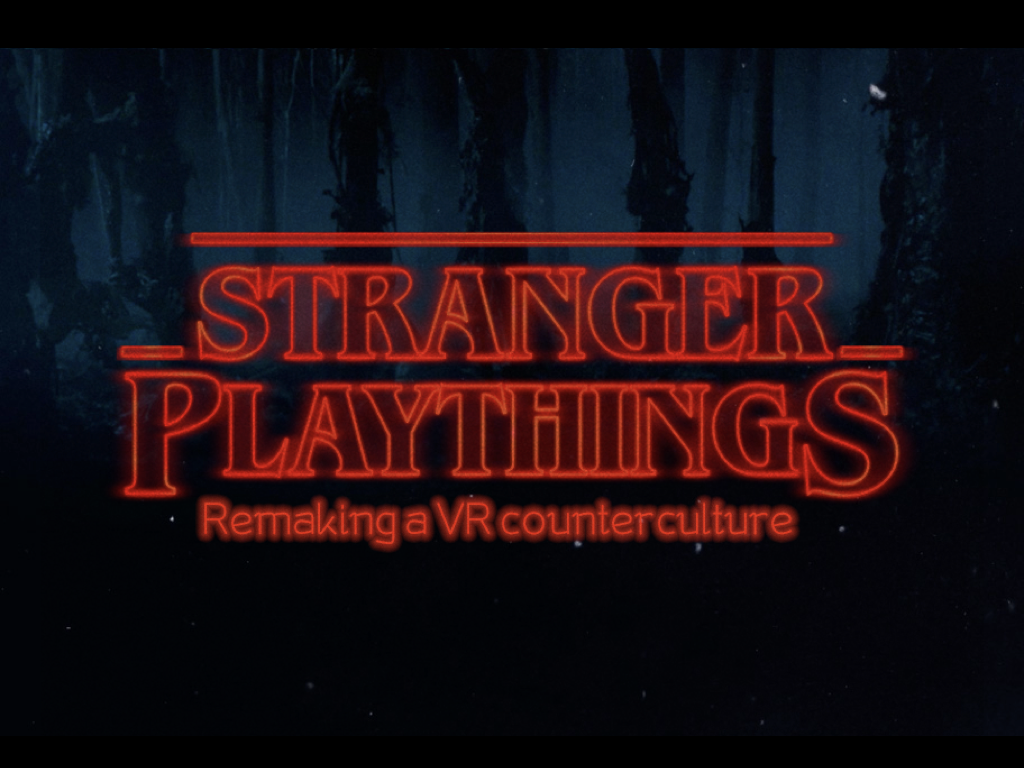
Today I’m going to talk about making VR countercultural again. So let’s start with a countercultural icon...
This is the transcript of a talk about Virtual Reality I gave at the A MAZE festival in Berlin and at Game Happens in Genova in 2017.
-Paolo

Today I’m going to talk about making VR countercultural again. So let’s start with a countercultural icon...
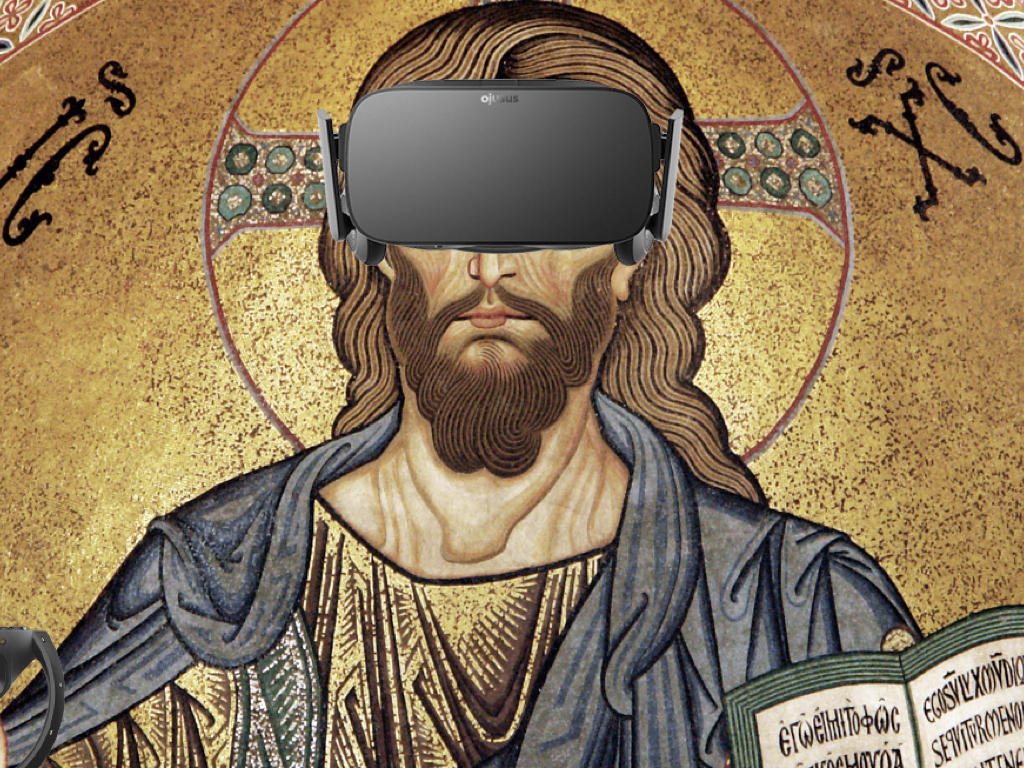
Jesus. Last year they announced this project called Jesus VR. For a second I was excited, finally something interesting was being done with this technology.
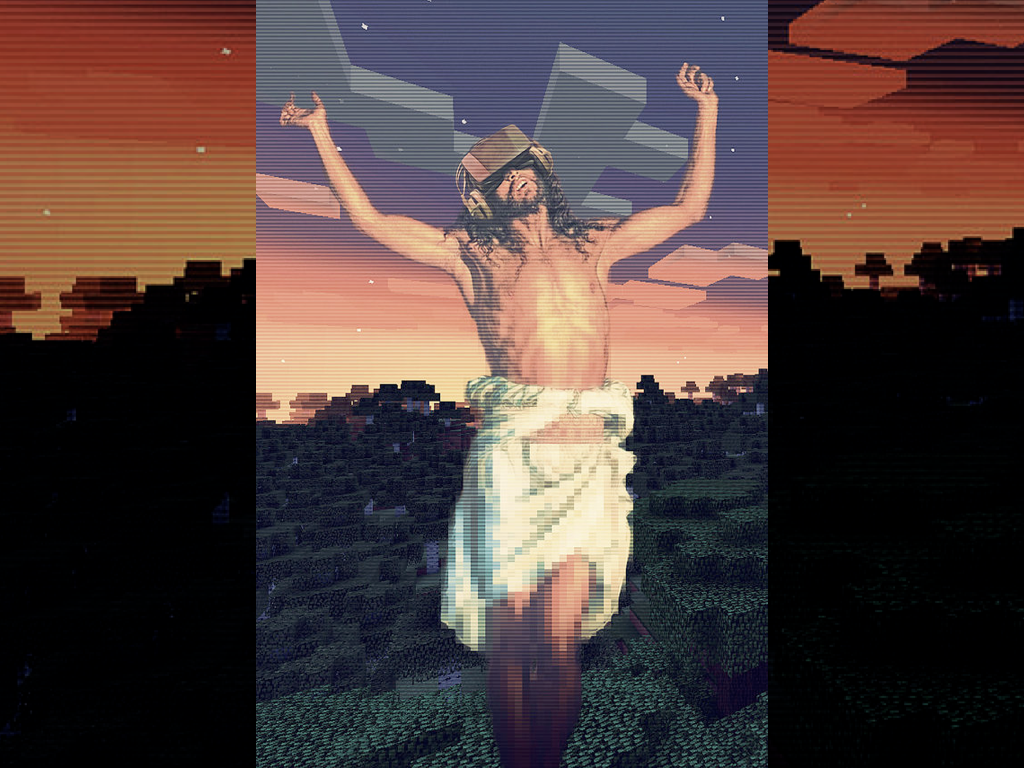
Is it going to be a first person Passion of christ simulator? Are you going to experience crucifixion and resurrection? Are you going to have a trinity avatar?
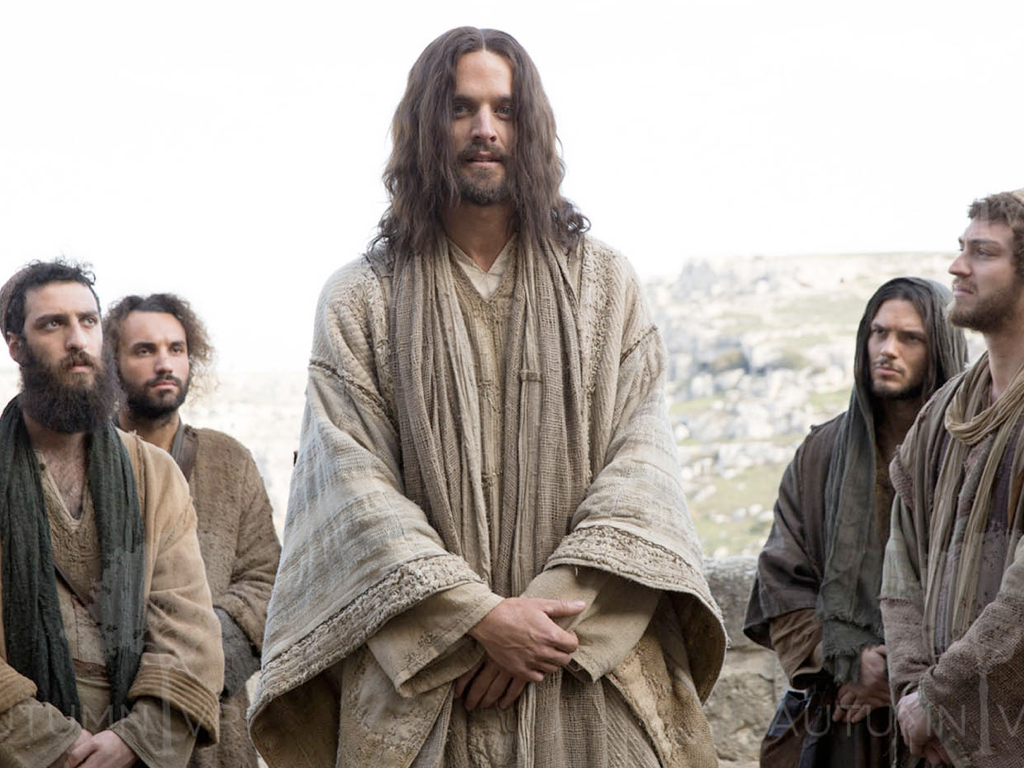
No, it turns out it’s just a 360 movie. And you follow the story of Jesus from the perspective of a bystander. And you can look around I guess but…
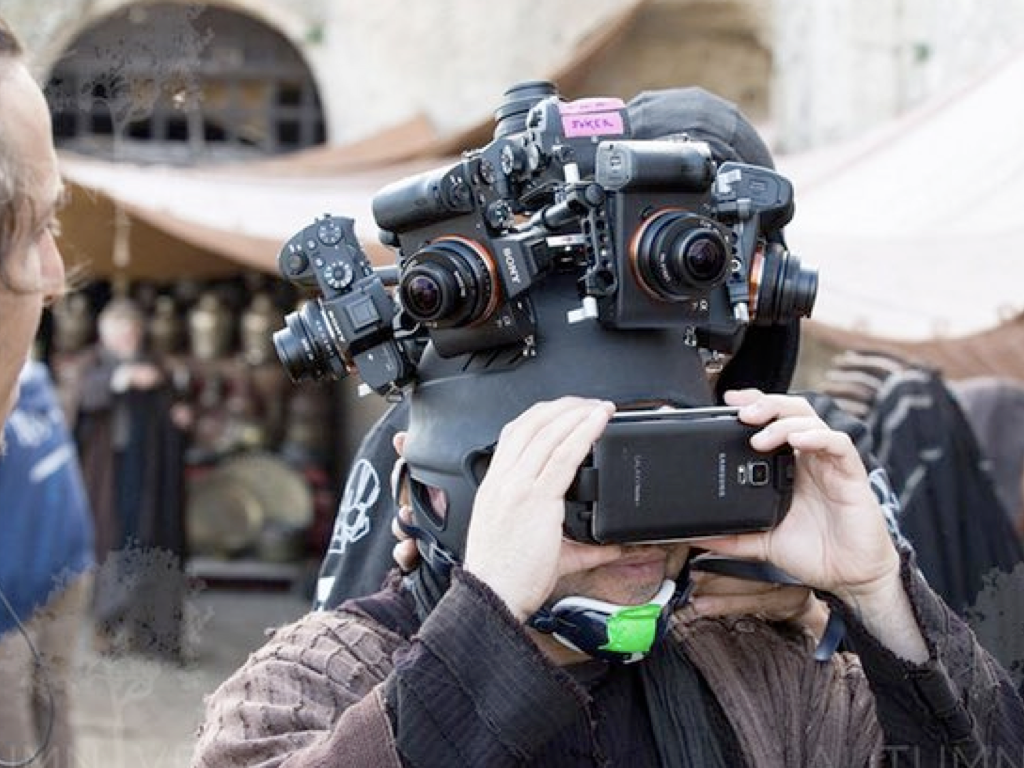
If you have Jesus in front of you, why would you want to look at other things? At the extras, at the pottery store in Nazareth, at the movie set…
Jesus VR is like VR porn.
What’s the purpose of expanding the frame?
“Oh that’s a nice ikea coffe table… cute loft…”
Maybe orgies make more sense.
We know why these technologies are adopted without too much thought. The VR term is used as a novelty and a marketing gimmick, as a way to signal innovation.
See this 1995 Nintendo Virtual Boy Commercial, portable console riding on the first VR hype.
We call VR a bunch of very different things that rely on similar hardware.
I don't want to normatively try to identify what’s real virtual reality and what’s fake virtual reality. To me the variety and openness of the concept is due to the fact that VR is the convergence of different traditions.
Traditions with different aesthetics, different goals, and different strategies.
I want to highlight the problems of the most popular ones and try to recuperate a traditions and strategies that became less popular.
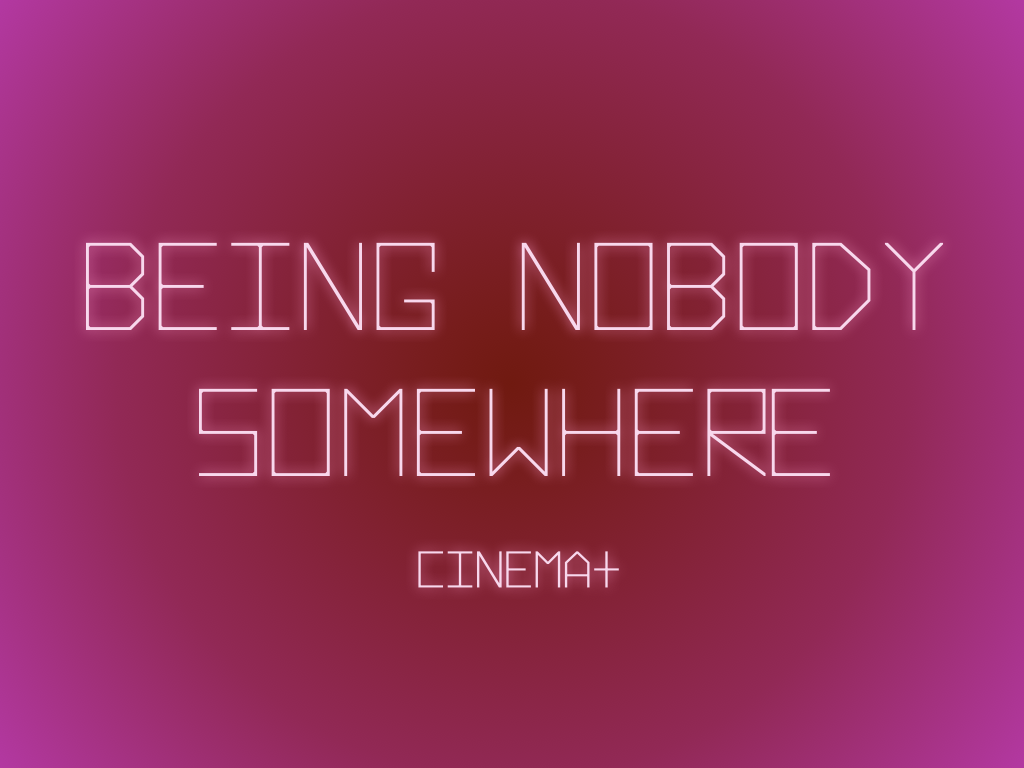
The 360 video tendency. Is essentially an augmentation of cinema.
Do you like cinema? What about MORE cinema?
More immersion, more emotional engagement…
But it predates cinema…
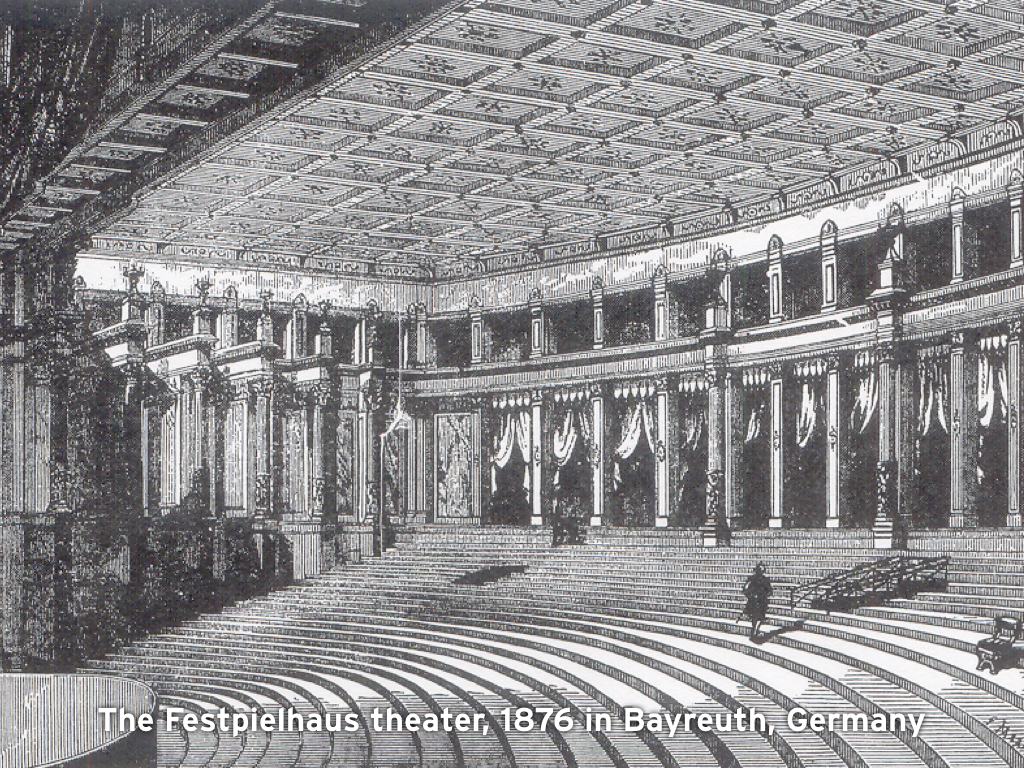
It comes from the kind of theater conceived by Wagner to enhance immersion.
Completely dark, surround-sound reverb, bigger stage.
It was a technology that complemented the idea of total work of art. Art that overwhelms the viewer on many levels.
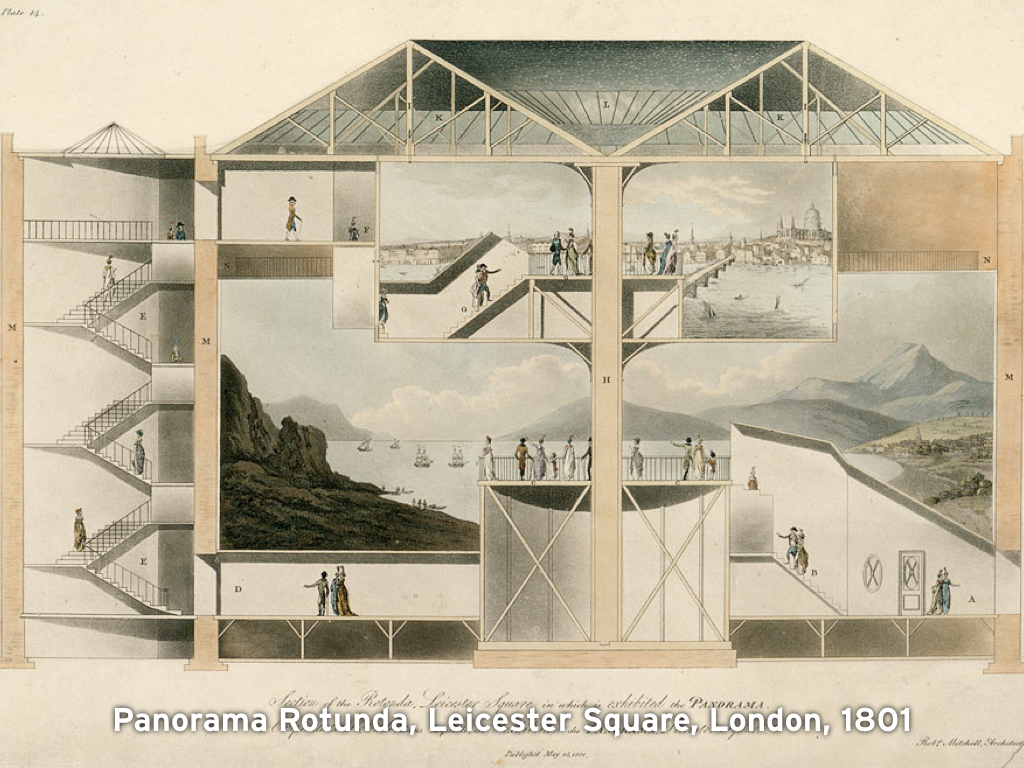
It comes from the panoramas and dioramas of the early nineteen century.
They were like 360 paintings exhibited in special buildings, with a very controlled experience (controlled lights and point of view).
They usually represented battle scenes or landscapes.
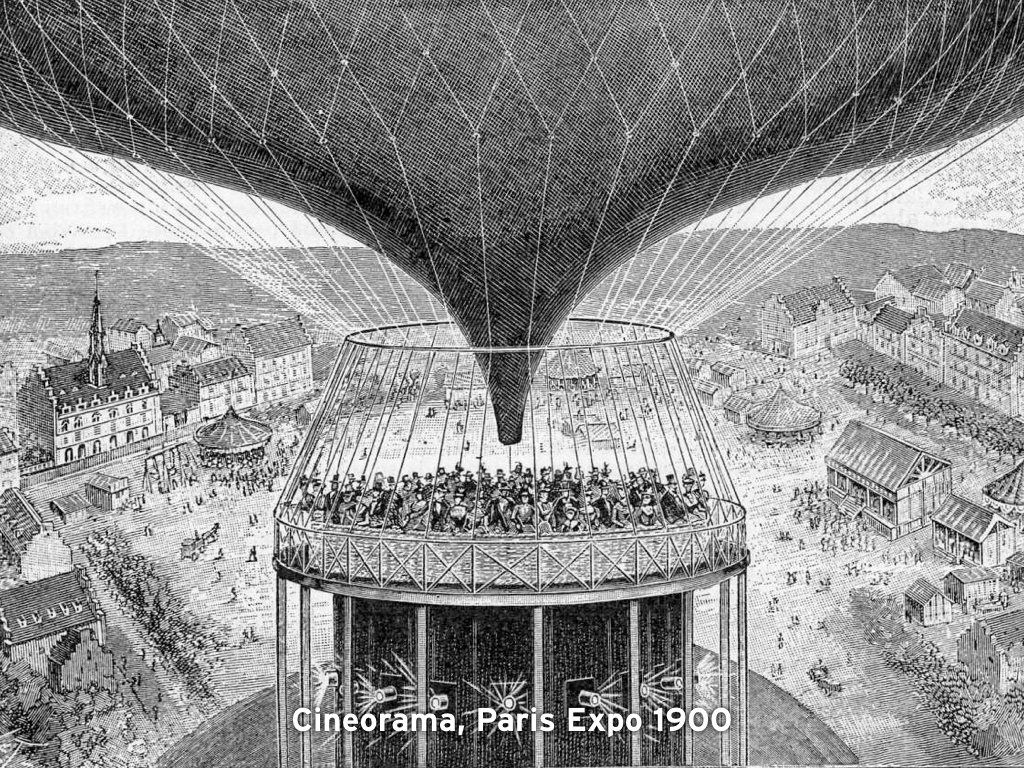
The first 360 film experience was the Cineorama in the year 1900. It was simulated a ride in a hot air balloon over Paris.
Presented at the Paris expo, had 10 synchronized film projectors. It lasted 3 days before it was shut down because it was overheating, people were fainting and they were afraid of fires. VR technologies still have this overheating problem.
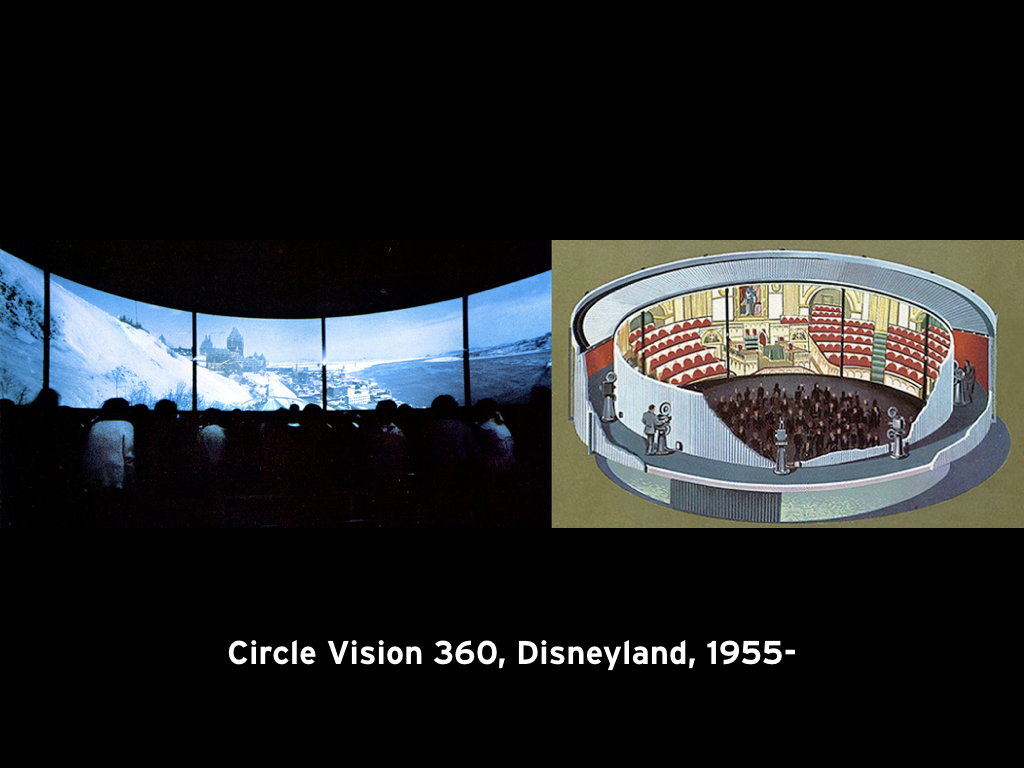
Proper 360 cinema was successfully deployed in theme parks. Immersive cinema has always been an amusement park novelty, and I think it still is into some extent.
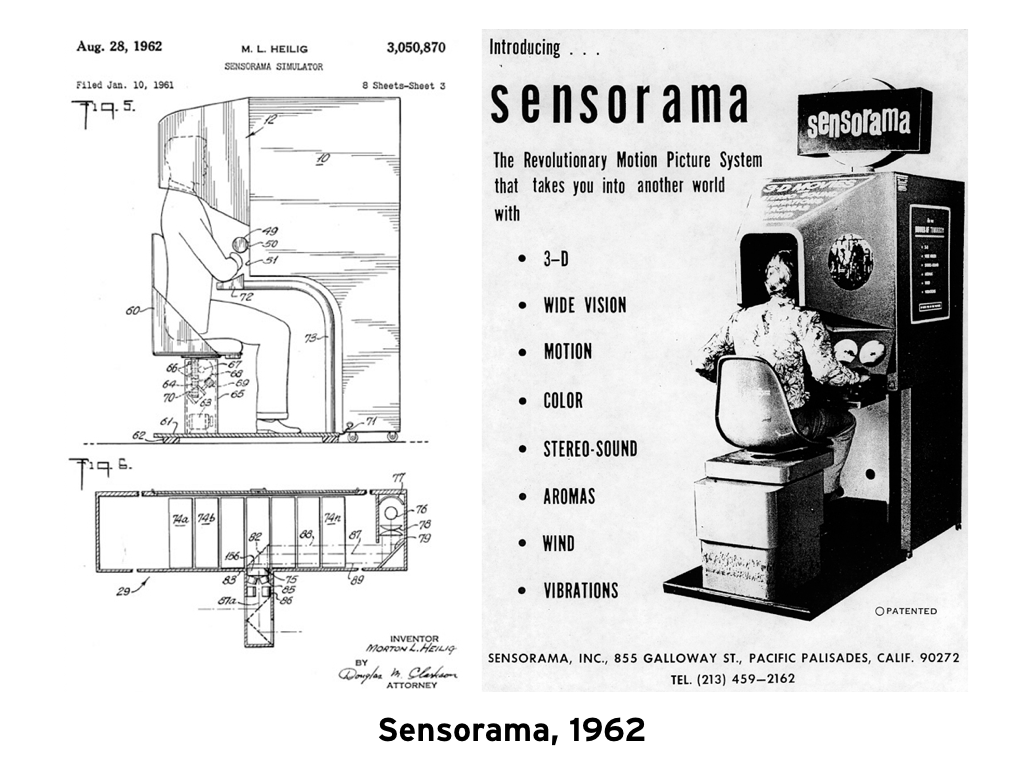
One of the recognized precursors of proper VR was this obscure device called Sensorama that was meant to expand cinema with stereoscopic vision, wide frame and even scripted smell and haptic such as wind and vibrations.
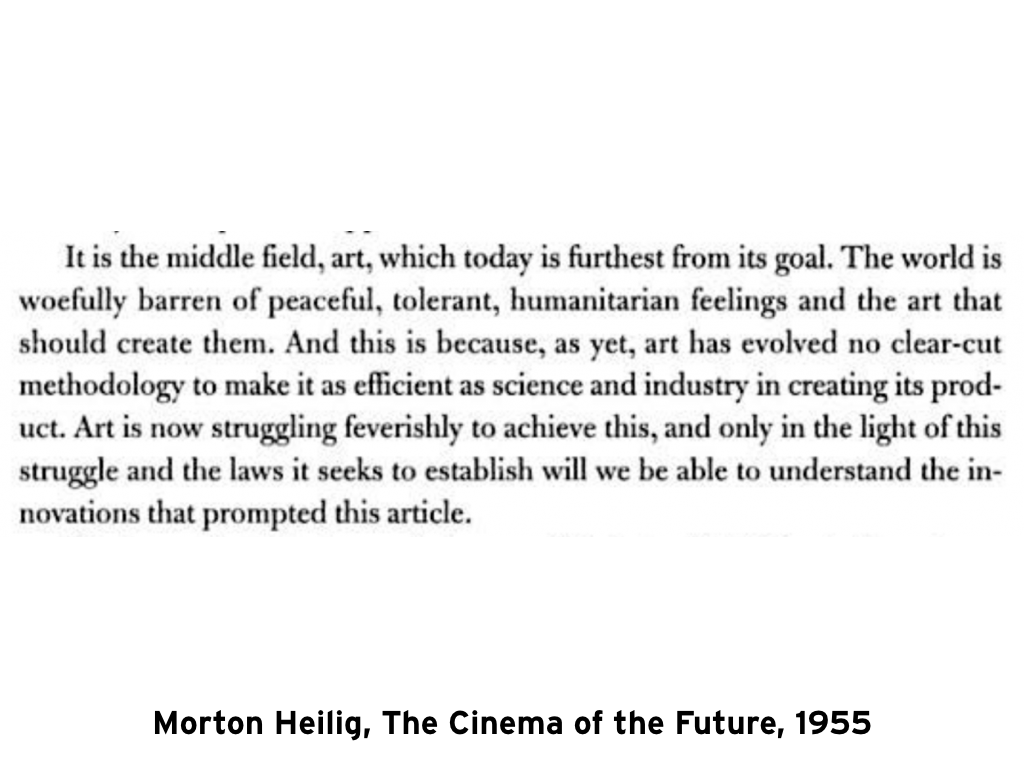
It seems like another novelty but the creator was serious about it. He saw it as applying the scientific method to art making.
He wrote an essay, in which he basically argues: more sensory overwhelming produces more powerful experiences and more powerful art.
That narrative is still around and it’s one of the biggest selling points of VR.
I’m talking about the idea of VR as empathy machine. It’s the notion that there is a lack of empathy in the world and we can fix it with 360 video.
It started with this popular TED talk by Chris Milk. In which he basically says: “if only we can show powerful people, politicians, millionaires the suffering of the marginalized in an immersive way, they will do something about it”.
That idea got picked up by the media immediately and created a whole genre of 360 refugee videos and empathy experiences.
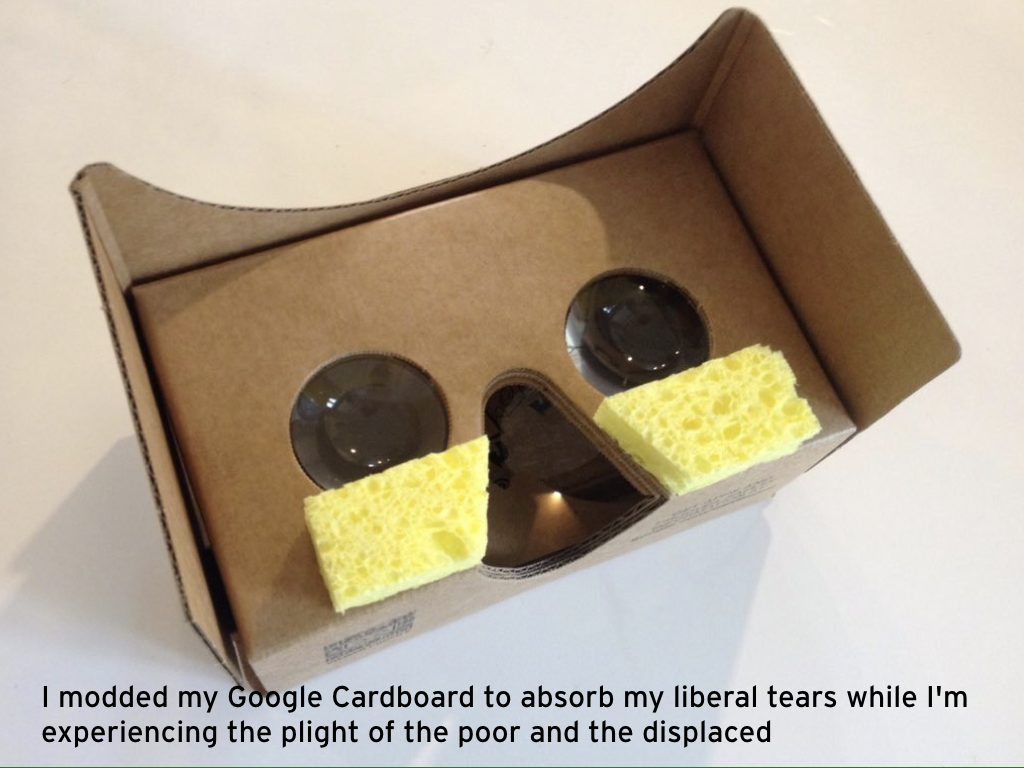
Many people including myself have been critical about this approach. I think it’s reductionist and even insulting to think that a technology, which is really just a visual illusion, can foster a better understanding of the other.
It calls into question the issue of voyeurism and poverty tourism, because it becomes a medium for presence and not just storytelling.
You are “there” but you are nobody. You are a disembodied gaze.
And since these technologies are not cheap, this kind of documentaries are rarely made by the subjects themselves.
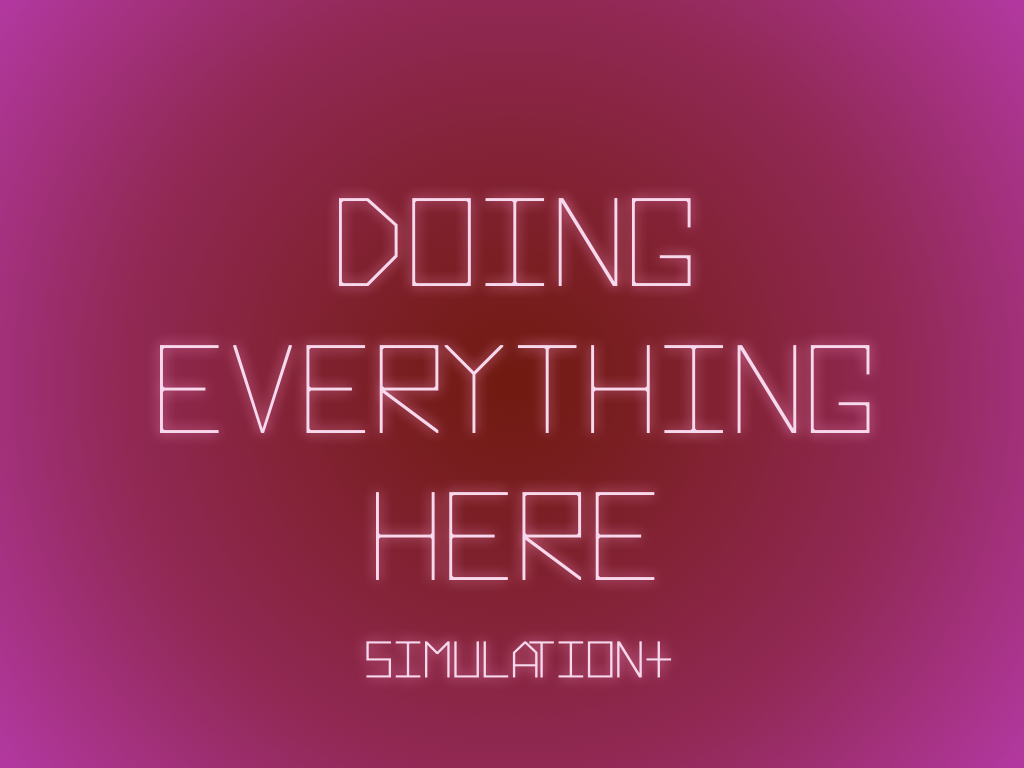
Another tendency is VR as extension of simulation technologies.
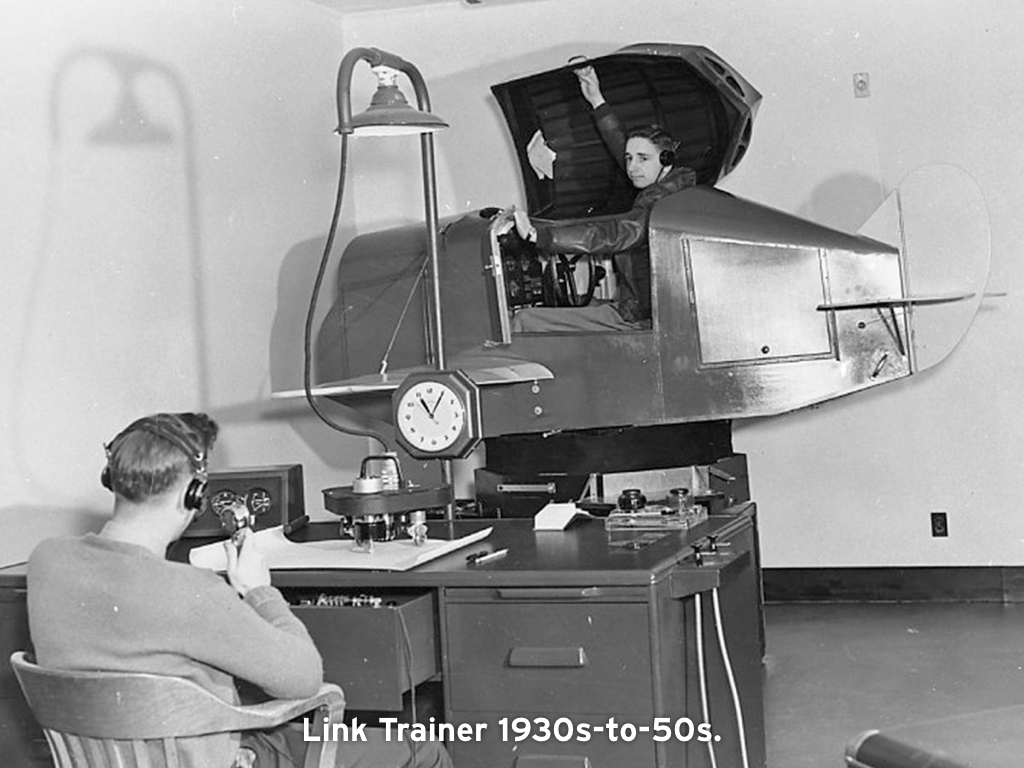
That tradition goes back to military simulations and cybernetics. Providing a virtual environment to try things out, learning to operate a plane without risking the aircraft.
Ivan Sutherland, the father of virtual reality and augmented reality, was working for the military with head mounted displays attached to a live video feed.
He realized that HUD display actually give the illusion of being where the source of the video feed is and imagined the potential of having computer generated imagery instead of videos (he also basically invented computer graphics).
“My little contribution to virtual reality was to realise we didn’t need a camera — we could substitute it with a computer.”-Ivan Sutherland
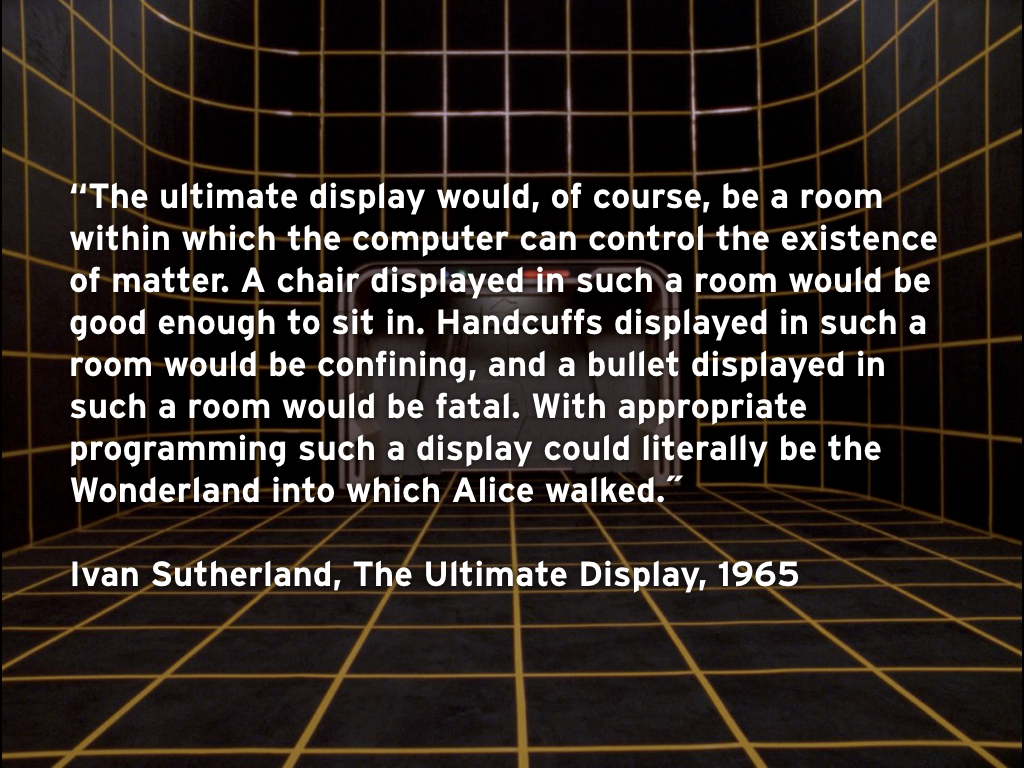
He even envisioned an ultimate display as a kind of room scale VR able to simulate matter, like the Holodeck in Star Trek, or the world of Alice in Wonderland in which everything is possible.
Of course that kind of bizarre vision wasn’t what the military was looking, VR ended up initially simulating only reality.
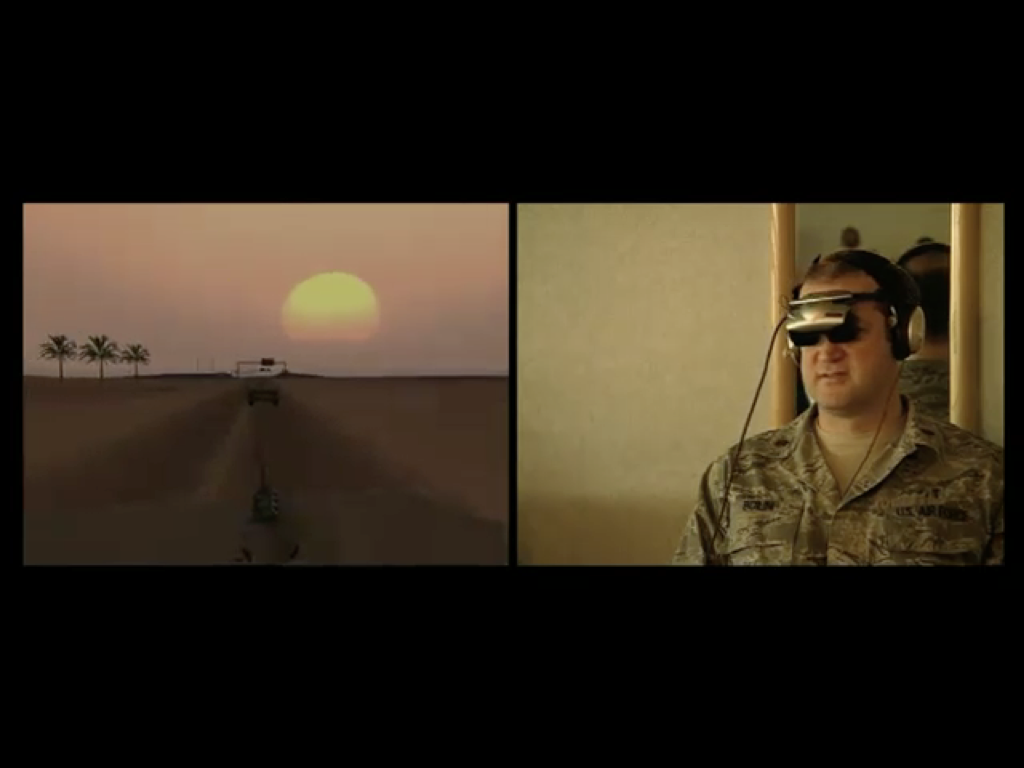
And there’s nothing wrong with simulating reality. VR simulations have many specialized applications, not only military, but architecture, surgery, space exploration, treatment of post traumatic stress disorder and so on.
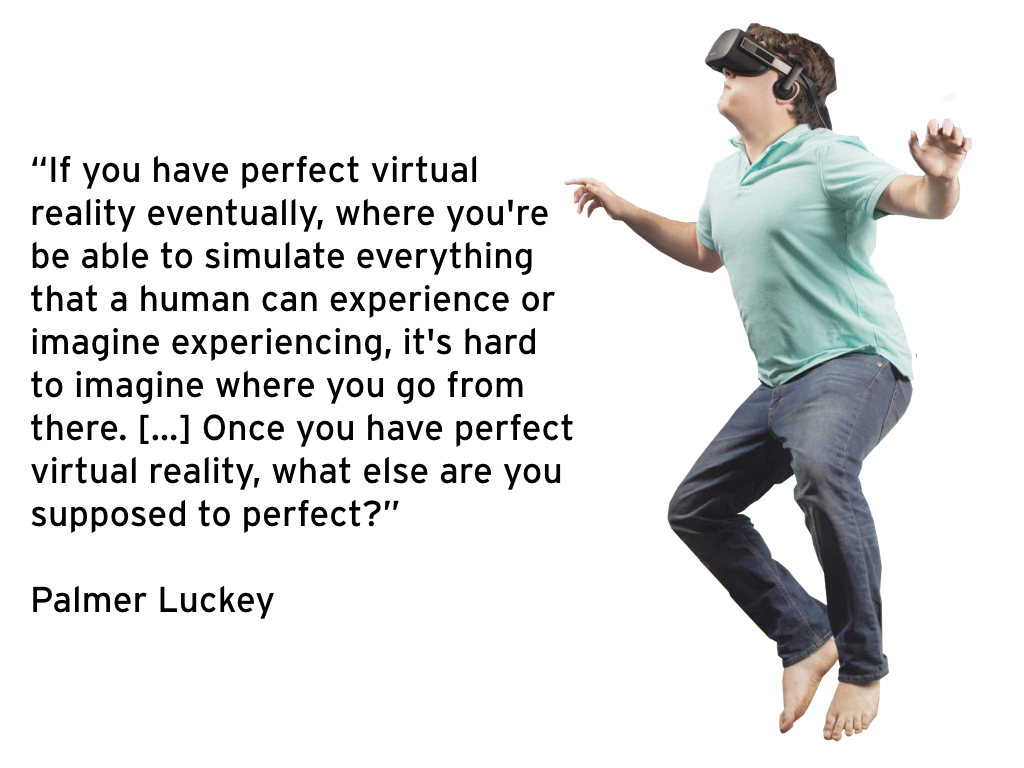
The problem is when this tendency is generalized to inform VR as a mass consumer commodity.
You end up with these reductionist (or even dystopian) ideas. All problems can be solved by a sufficiently sophisticated VR reality.
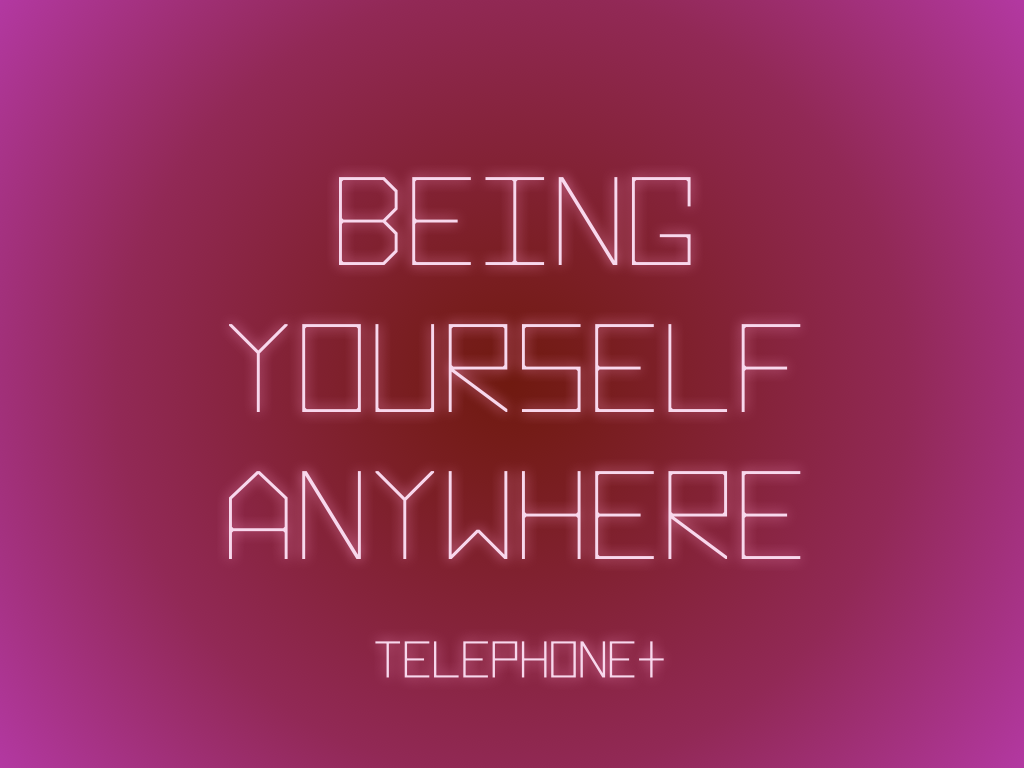
Another related tendency is VR as an extension of communication systems. An augmentation of the telephone or skype.
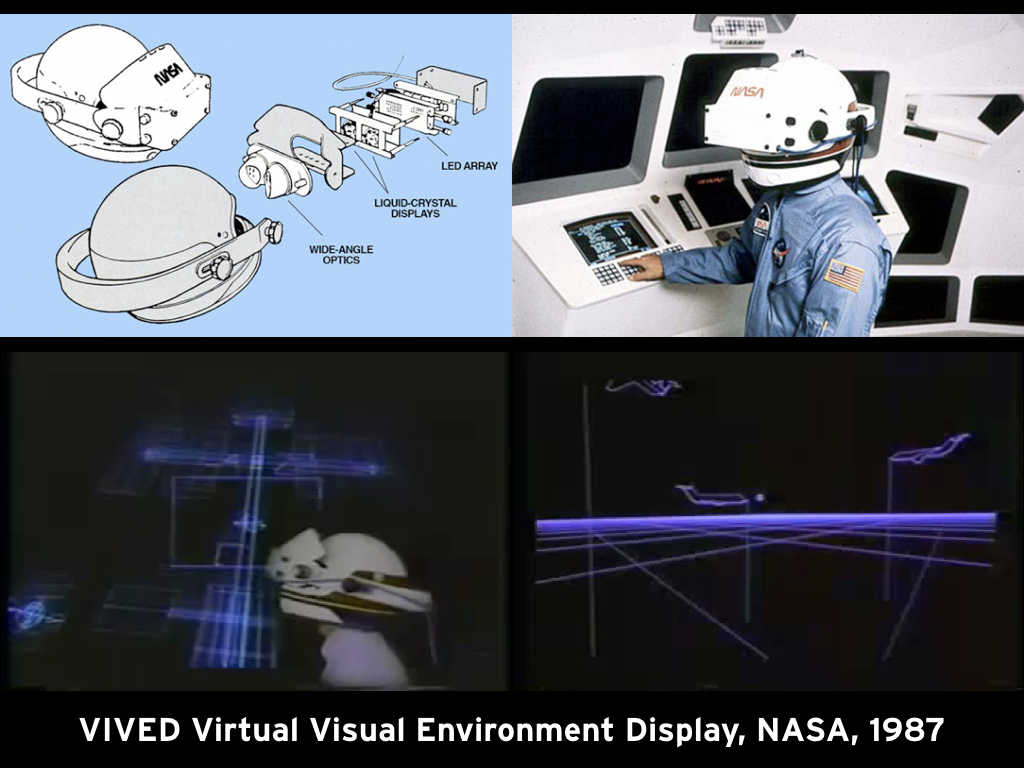
That’s referred as telepresence and it’s the first application of VR technology as we know it, with the headset and the hand interface.
Back in the late ‘80s NASA was looking for ways to operate robots at distance.
Today there are massive investments in this approach like Facebook Spaces.
To me these trailers are perfect ways to understand the desires of informational capitalism. It makes sense that FB wants this scenario to happen.
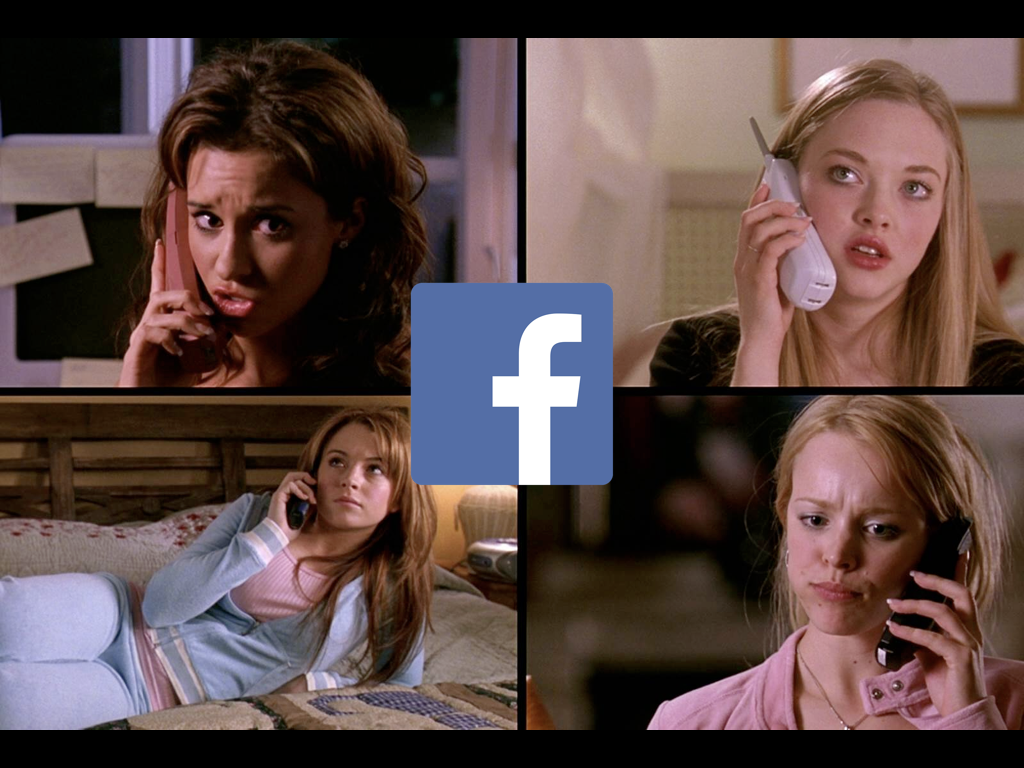
FB works by imposing itself as a parasitical medium for existing social relationships. It establishes in your social network as intermediary, dictates the protocols (you can express yourself by these emojis etc) and in exchange for this service mines your data, pushes advertising and so on.
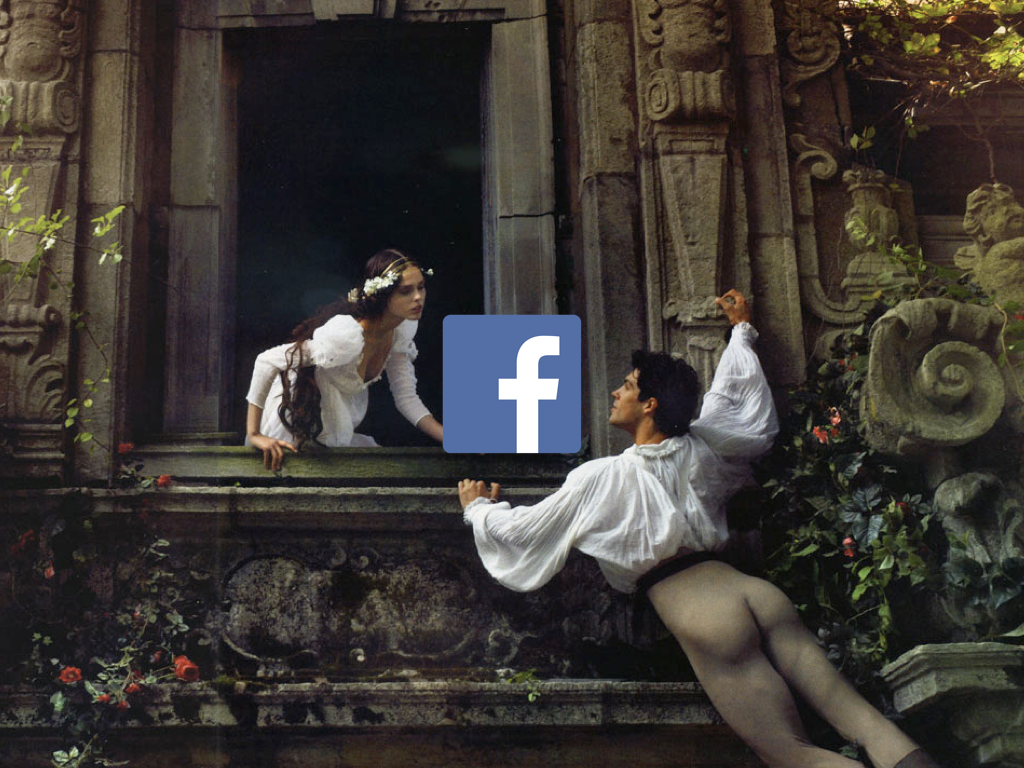
So it's not surprising that it's trying to colonize other kinds of relationships, like real time face to face encounters via telepresence.

My impression is that it's probably not going to work this way. Because from the user perspective FB is a relationship manager. It doesn't expand your relational capabilities as much as it optimizes them.
It makes it easier to keep track of life events, names, emotional states of people in an increasingly interconnected and mobile society. We use to call people or send people emails for their birthdays, FB allows you to that semi-automatically.
And it works because it runs in the background of your life, there's a new baby picture on the other tab you can half-ignore.
Part of that efficiency is the fact that Facebook is asyncronous, so you can fit it in your life however you want.
FB spaces of course allows you "meet" with people far away but it's not integrated with our usage of computing machines. Until we all start working in VR, reading news in VR, procrastinate in VR, which is not gonna happen anytime soon.
What's even more unconvincing is the ordinary normcore aspect of these interactions: “Let's take a selfie, check out my apartment”
The other part of FB’s business model is to be an identity verifying service: only governments and credit cards companies can verify the identity of a person, Facebook wants to be in that field as well.
Twitter doesn't care about your identity, Facebook does. That's why they are obsessed with real names and real information.
And that's why they want Facebook spaces to be a space where you can only be yourself.
To me, if you want to convince people to put some heavy gear on their faces and commit to real time interactions, you have to be less ordinary.
You have to throw extraordinary gatherings like VR Role Playing Games. Like a VR version of Burning Man for Ugly people in which everybody can participate as creator, in which you can be anything and anybody.
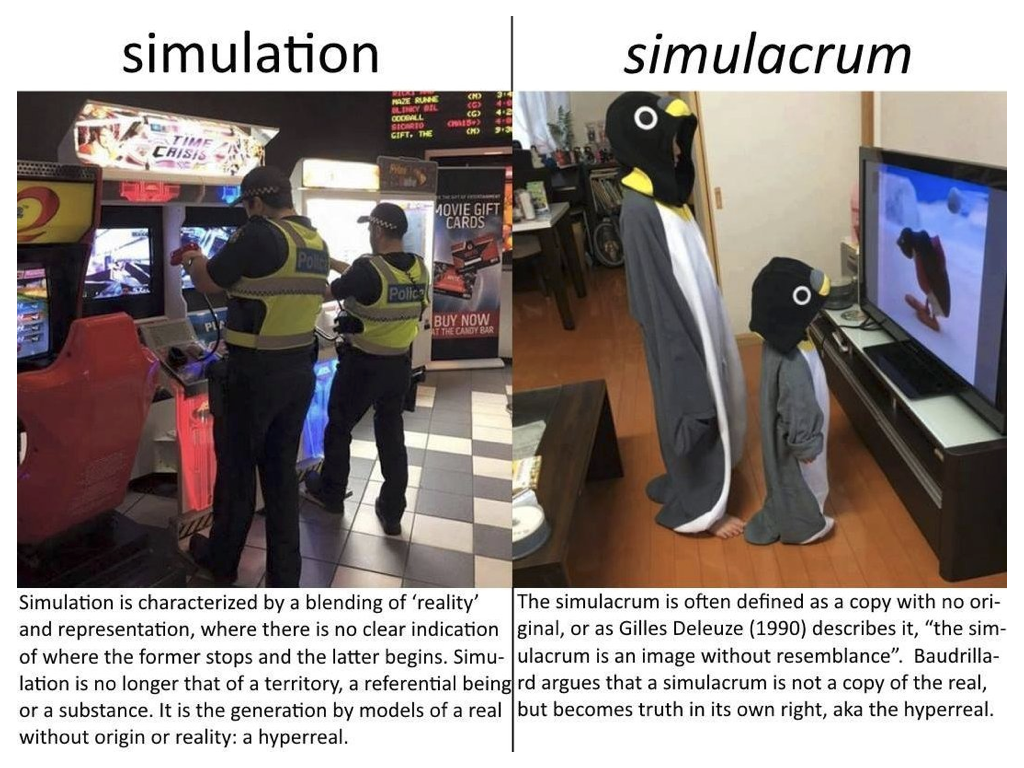
This is where I leap from simulation to simulacrum in the Baudrillard and Deleuzian sense.
Toward images and experiences with no resemblance with reality, experiences that become truth in their own right.
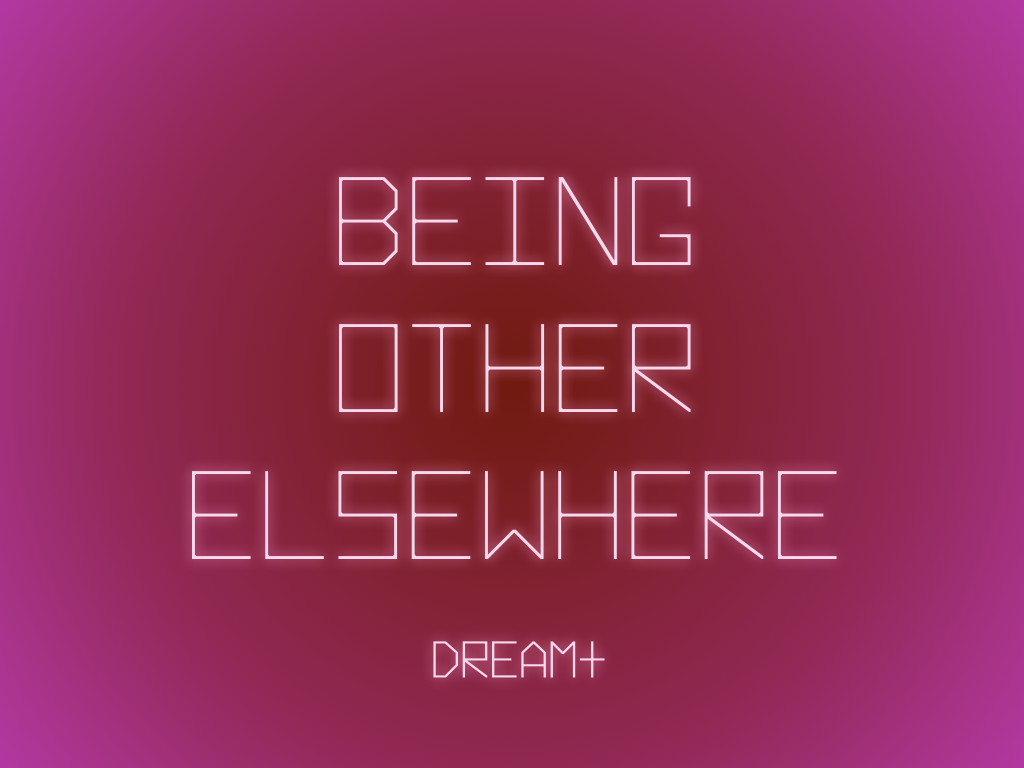
And this takes me to a less popular tendency of VR. It’s an augmentation of dreams, the creation of other states of consciousness.
That’s the tradition to reclaim, it's the tradition of creating stranger realities.

And this tendency too can be linked to a pre-digital tradition. Think about the architecture of churches, especially from the baroque period.
They used using illusionist techniques to blend 2d images with architecture and provided a truly immersive experience, including the play of light (candles, stained glass), and smell (incense, which highlights light beams like a fog machines), surround sound…
All with for purpose of overwhelming; of creating the sublime through scale and intensity. It’s religion as a psychedelic drug.

Or think about the expressive architecture of theme park or monuments,
the disorienting structure of the garden of exile at the Jewish museum here in Berlin.
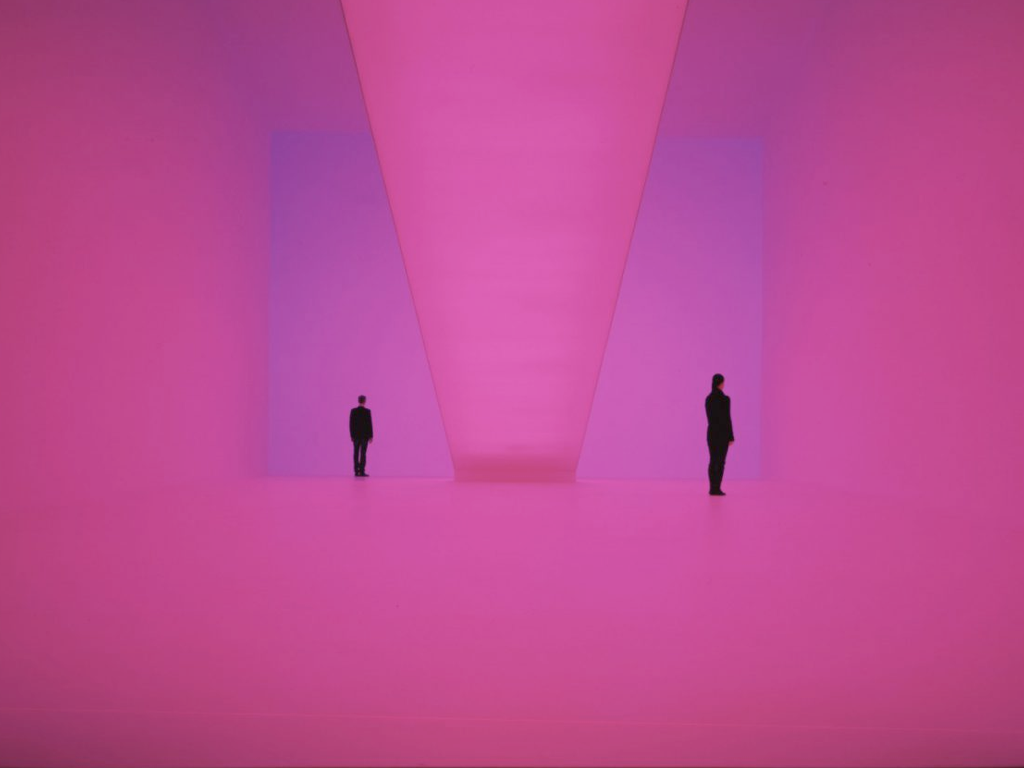
Or installation art messing with your perception. Like the work by James Turrell that uses extremely low light environment mess with your brain, amplify neural noise and produce a kind of hallucination.
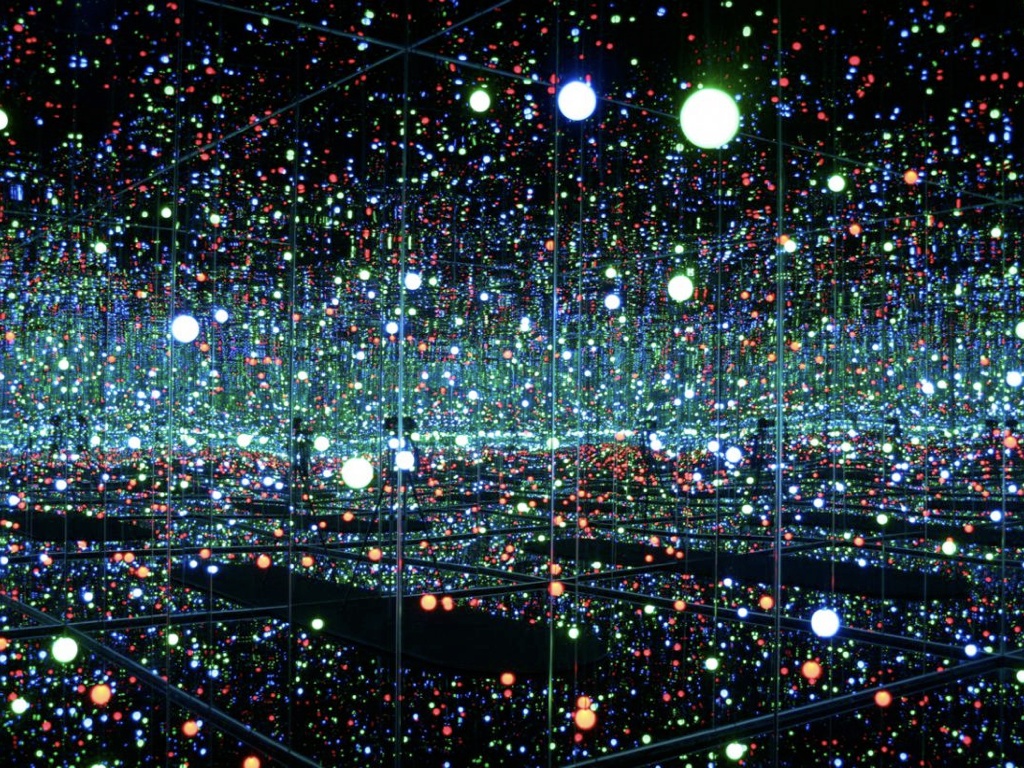
Or the mirrored infinity rooms by Yayoi Kusama.
The history of VR in the early nineties is directly related to subculture and psychedelia. The best example of this convergence is Mondo 2000, a Magazine/fanzine which was an anarchist precursor of Wired.
Topics were Drugs+Cyberpunk+Tech+Underground Music+Esoteric stuff.
You would see articles by the CEO of Autodesk, next to the prophet of LSD Timothy Leary, next to interviews with the cyberpunk author William Gibson.

That psychedelic, subcultural and mystical element is a clear influence for Jaron Lanier, the central figure of the first wave of VR.
He talked about disrupting the Western sense of reality: if you can be anything in VR, your sense of self would break down, your consciousness becomes a flow going through all things.
Their first experiments with avatars involved inhabiting a lobster’s body and other non human perspectives.
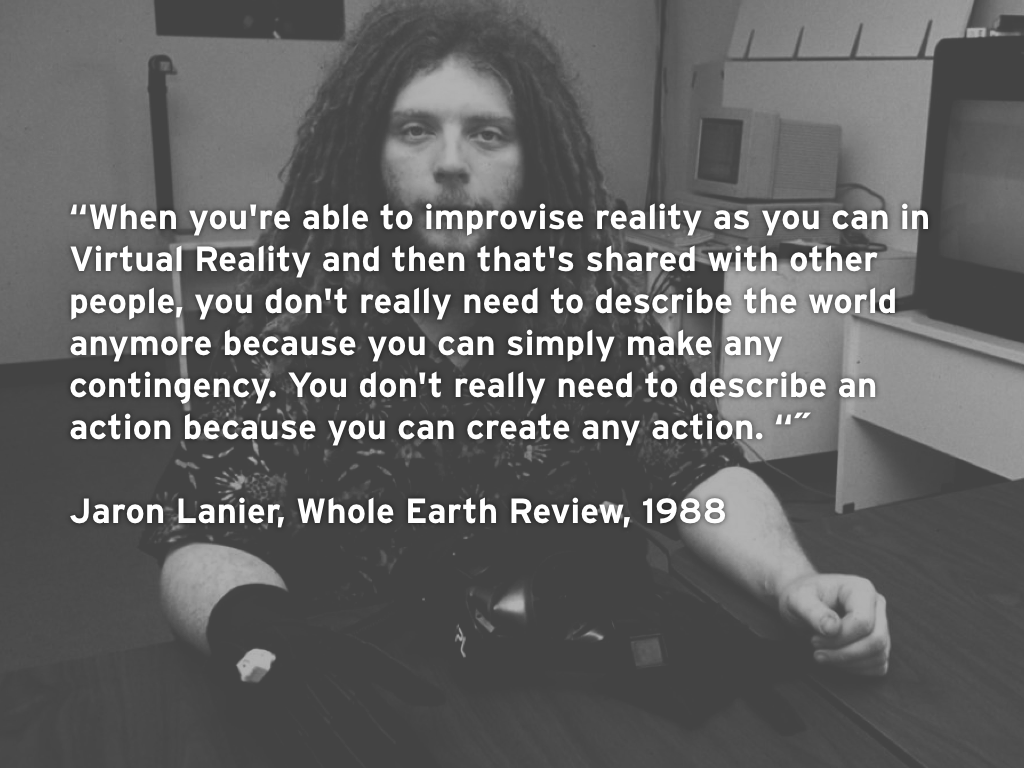
He talked about VR as a tool for post symbolic language: if you can improvise reality you don’t need to communicate using symbols…
Jaron Lanier was a musician and an artist so the first applications of VR were artistic, not the tech demos you keep seeing at VR showrooms.
And he wasn’t alone, artist went into VR right on thanks to the support of institutions like the Banff Centre for the Arts in Alberta.
Dancing with the Virtual Dervish was a computer-based visualization of the artist body which she manipulated and animated to represent decay and healing. This was in stark contrast with the rhetoric of disembodiment associated to VR.
Or Placeholder which was an extremely complex setup for two “players”. It incorporated elements of local mythology and performers and oral history, it sampled actual locations in the Canadian Rockies. It was high-tech but grounded in a social and geographical context.
Or Osmose by Char Davies. It was controlled by breath (sinking and floating) and body tilt.
For the author the breathing interaction was meant to “reaffirm the priority of ‘being in the world’ compared with ‘doing’ things in it or to it.” using these hands and glove controllers.
Char Davies had a background in painting and scuba diving, her worlds are floaty and painterly and made an innovative use of transparencies.
You often hear that VR is a new frontier, a new medium to explore, that we are at the “cave painting stage” of the medium, that we have no idea of what can be done because we are still have to define its language.
That kind of statement erases the work of these artists from the first wave, which were mostly women and they were doing much more challenging work than just throwing a few 3d models into Unity.
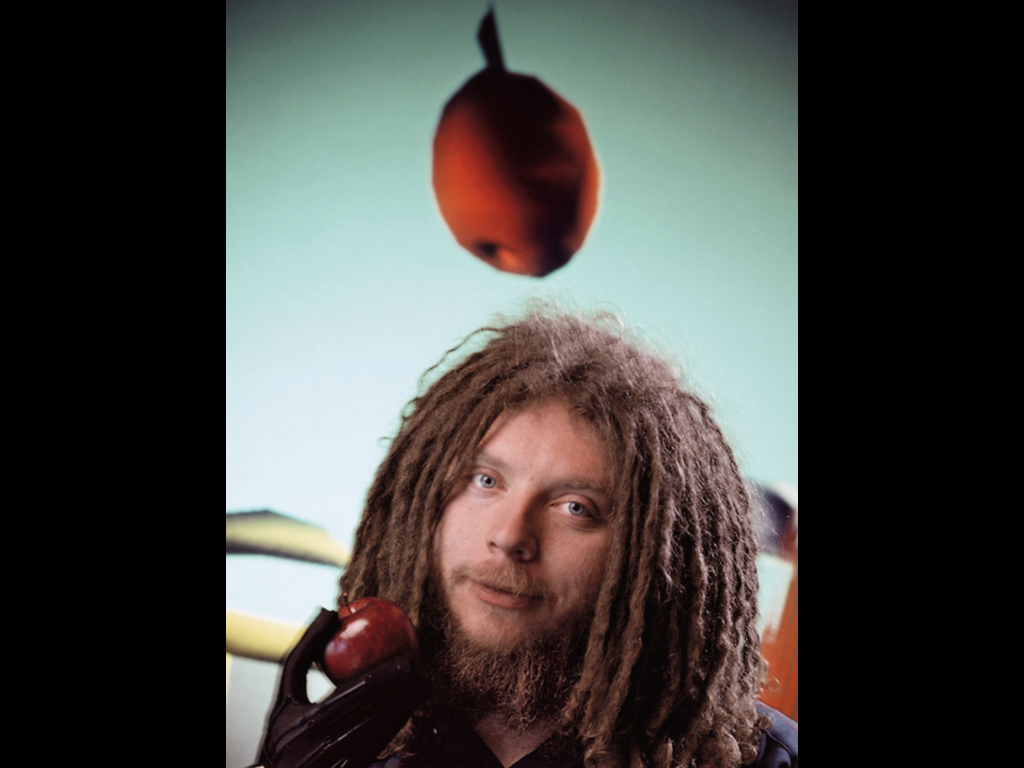
So how did we get from these adorable weirdos…
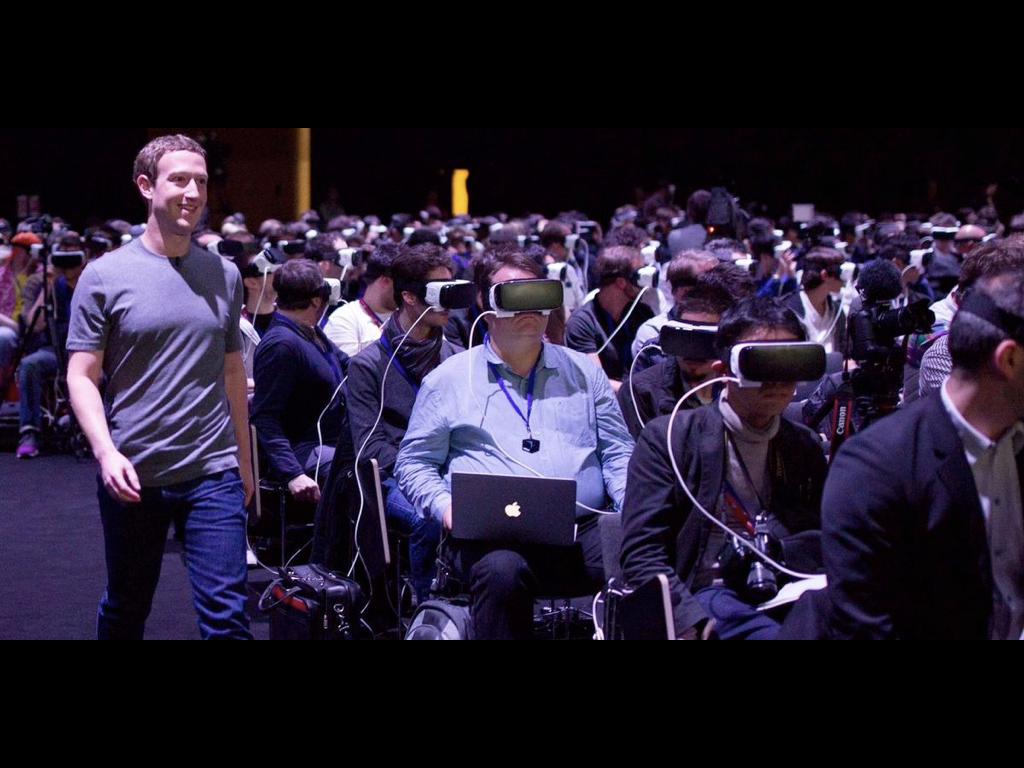
…to these conference rooms full of Silicon Valley bros?
Well we know the first wave of VR didn’t work out: the technology wasn’t really there, it was making people sick, and it was expensive and inaccessible, so most people understood it via sensational journalism and sci-fi.
VR in ‘90s pop culture was dark and dystopian and portrayed the technology in a moralistic way. It channeled the ’90s anxiety about rapid changes in technology
the fear of disconnection with “reality” in an increasingly mediated world.
VR was presented as a simulation that affects the real world, that messed with your brain, that was used by criminals, that may even kill you in real life…
I propose to reclaim that moral panic too.
Let’s make VR dangerous again.
Let’s make it “obscenely gay” like Robert Yang said.
Let’s make it queer.
So that the toxic mainstream gamer culture, the normcore facebook culture stays away from it.
So that the silicon valley bros and their investors get freaked out.
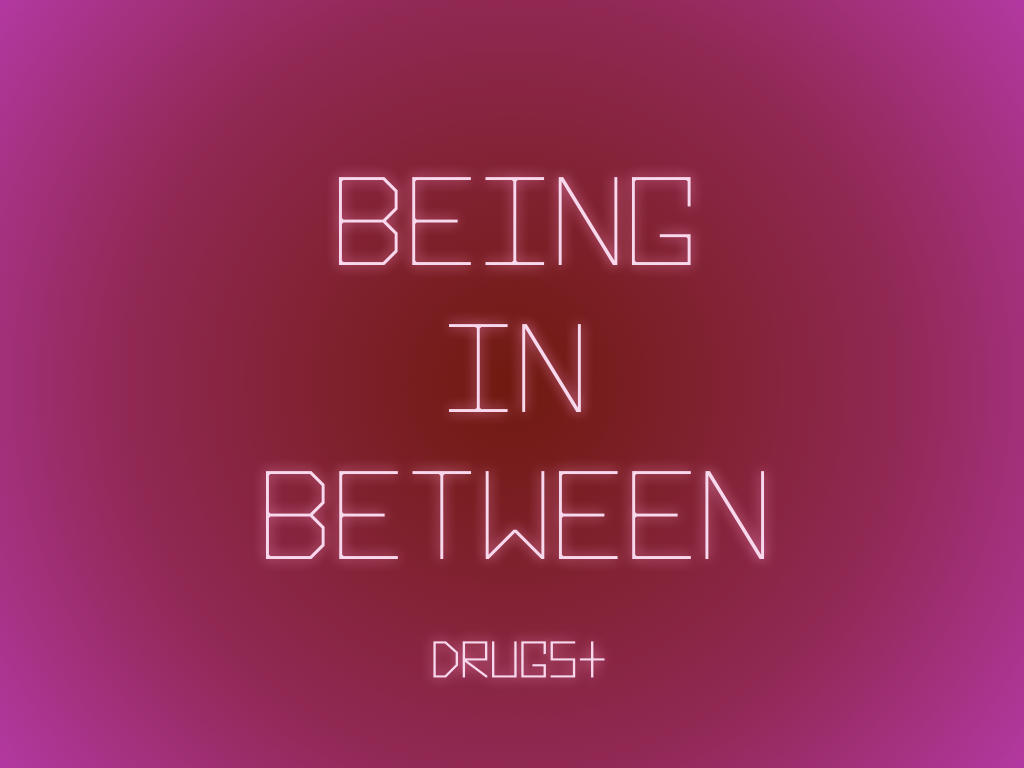
And this takes me to the last tendency that perhaps is even more connected to altered states and psychedelia.
Because taking drugs or getting drunk is usually more like a filter applied to cognition and thought, the world is still there providing you with stimuli.
So being in between states as opposed to fully immersed.
It’s usually referred as augmented reality or mixed reality.
And I know what you are thinking. AR is typically presented as a kind of information overlay on the top of a live video feed - hypothetically on a pair of smart glasses or contact lenses or retinal implants like in Dark Mirror.
That’s really the ultimate dream for advertisers like Facebook.
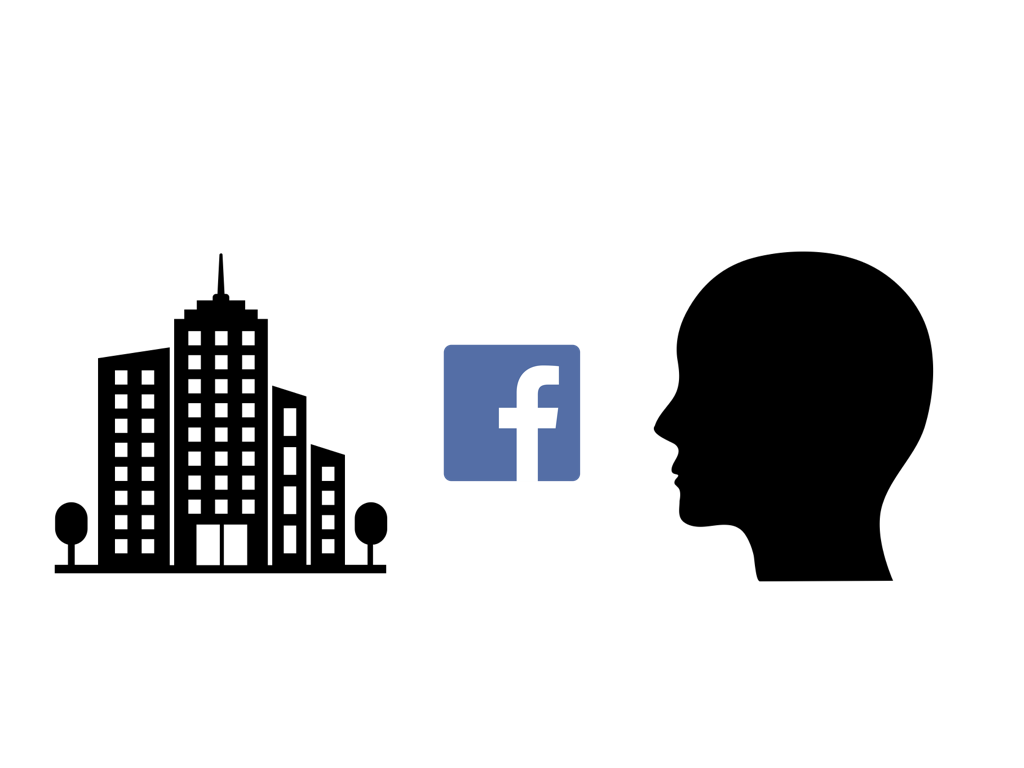
Because they would finally become the ultimate interface between you and the physical world.
It’s also a sad and boring proposition.
This is a bit more interesting. Mixed reality to remap bodily experiences to other realities.
Or this live streaming in Fantastic Contraption, having conversations with others while being “immersed”.

Or playing asymmetrically with people who are outside.
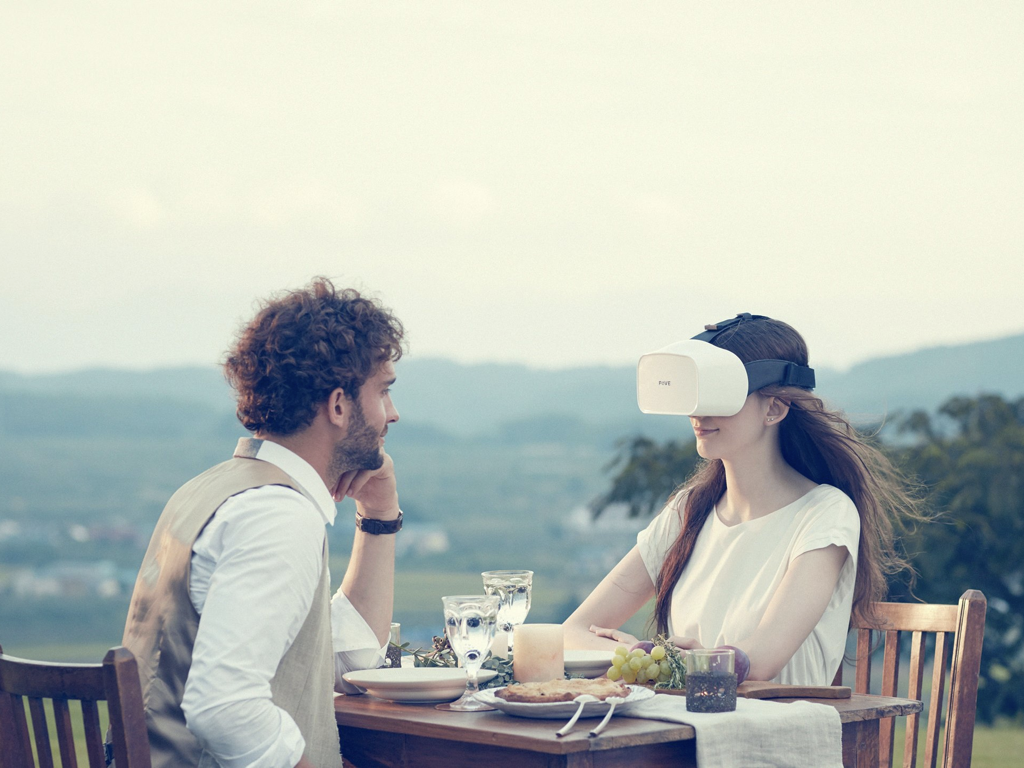
People have been making fun of this picture. Why would put a headset on in such an ideal date scenario?
But I’m curious: what’s going in on there? What are they talking about?
Smell and taste and haptics are impossible to simulate, so it makes sense to not simulate them.
Or think about mixed reality VR sex. It’s always imagined as a complete simulation for lonely geeks, and requiring these creepy interfaces.
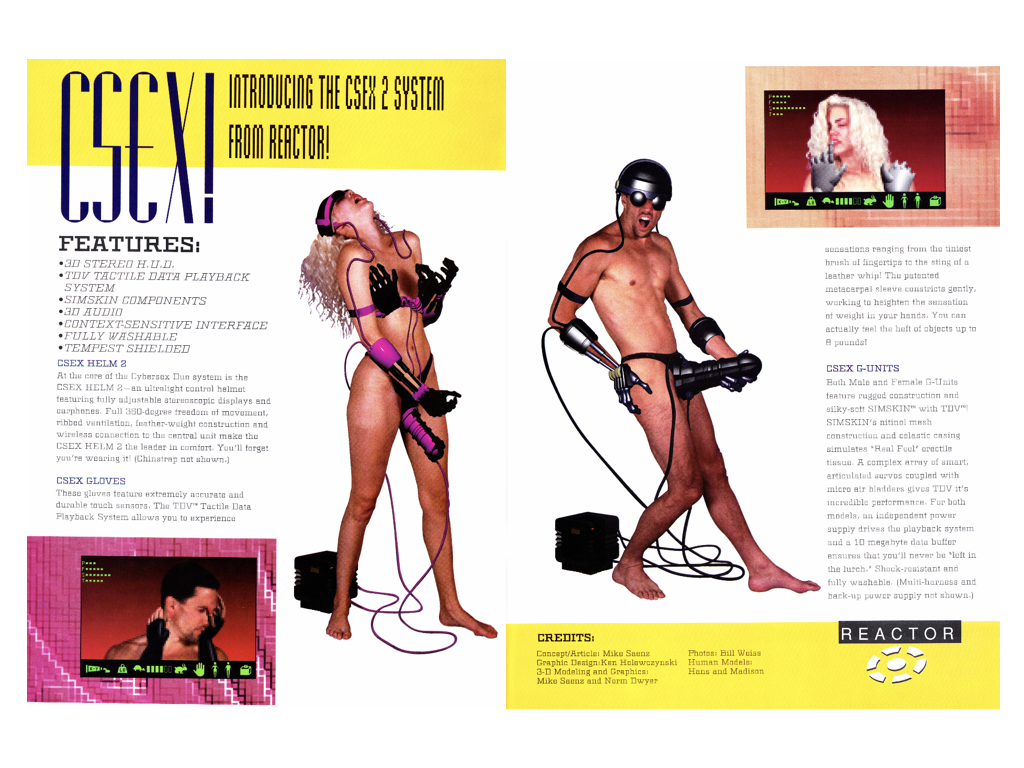
Or again, with the idea of telepresence, sex at distance mediated by machines and headsets.
(This is a concept from a 90s magazine like Mondo 2000 about the future of sex)
This classic scene from the Lawnmower man is a bit more interesting.
It was a bad movie but that regardless, it put VR on the map, and framed it as a perverted dangerous technology.
Seriously, don’t watch it. But this scene specifically is kind of cool because it shows a post human fluid and queer sexuality, not just a simulation of real sex.
And it even depicts a rape in cyberspace anticipating the issue of consent and boundary negotiation that is becoming a hot topic with social VR.

So instead of this impossible simulationist or telepresent approach, instead of creating surrogates of sex, you can imagine VR augmented sex.
Take this ordinary situation.
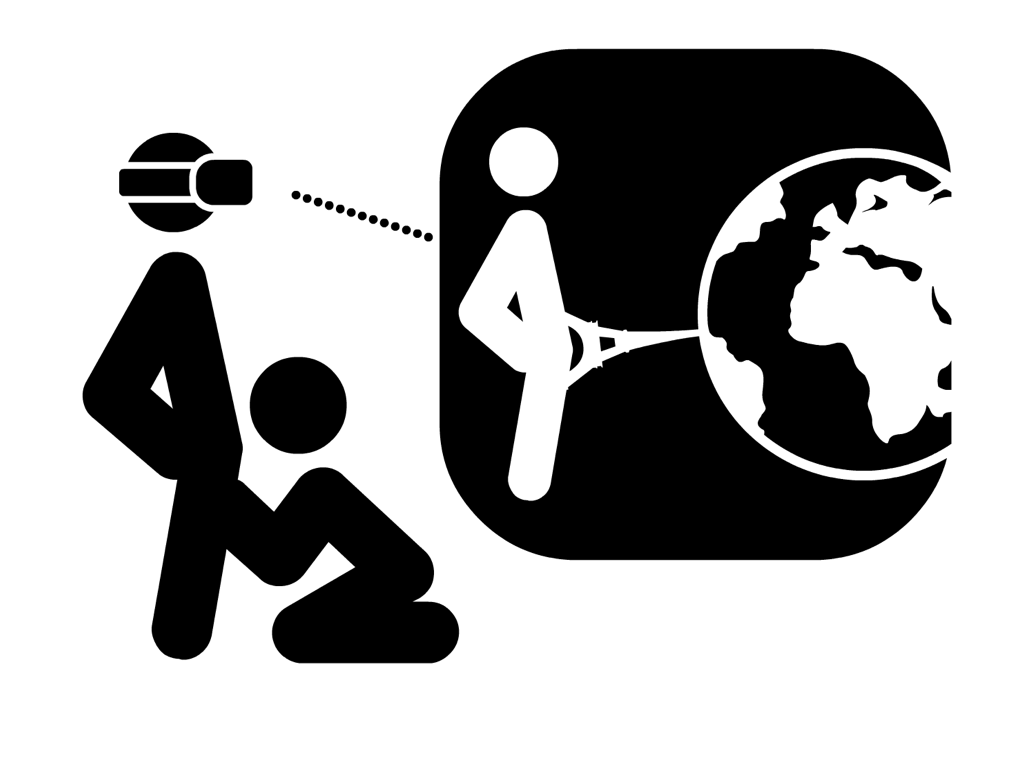
And add VR gear without replacing the haptics and the human intimacy.
But rather remapping them on other realities.
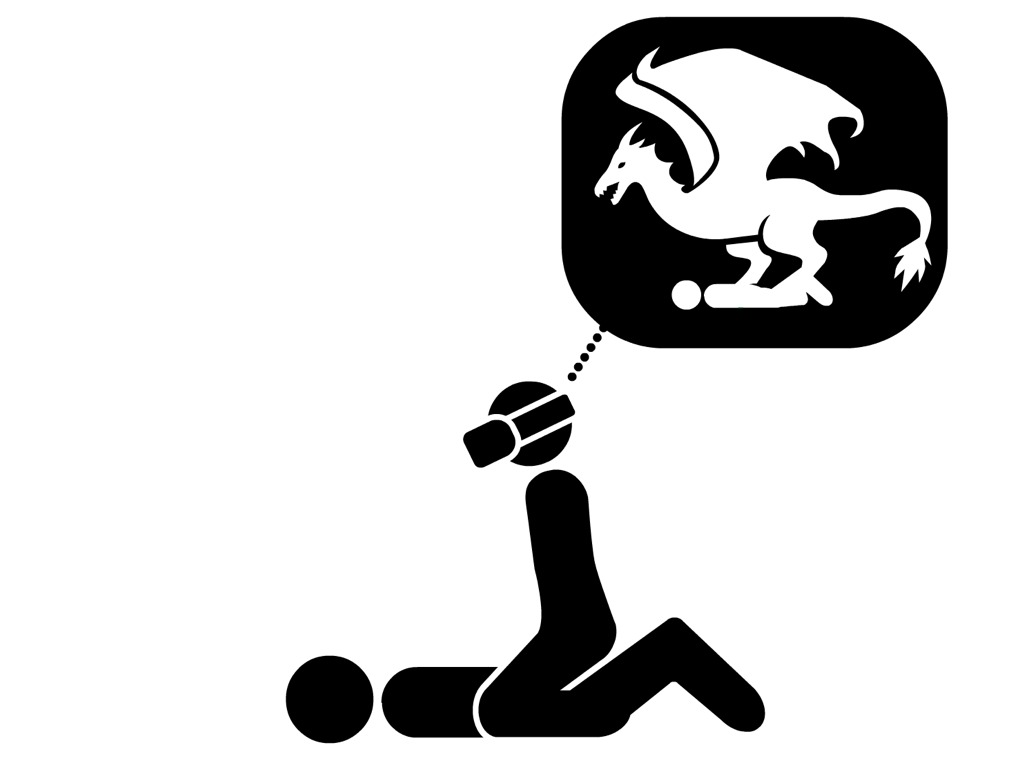
And the great thing about VR is that it doesn’t have to be objective.
It doesn’t have to be a consensual hallucination, like in Gibson’s definition of cyberspace.
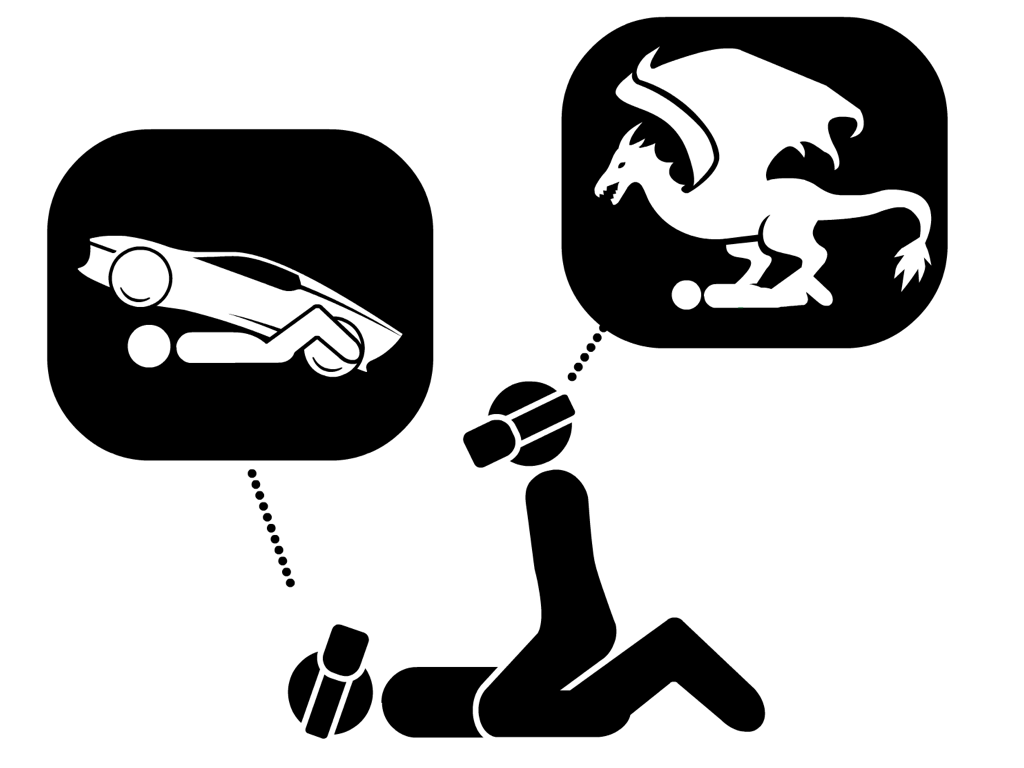
It can be asymmetrical and subjective.
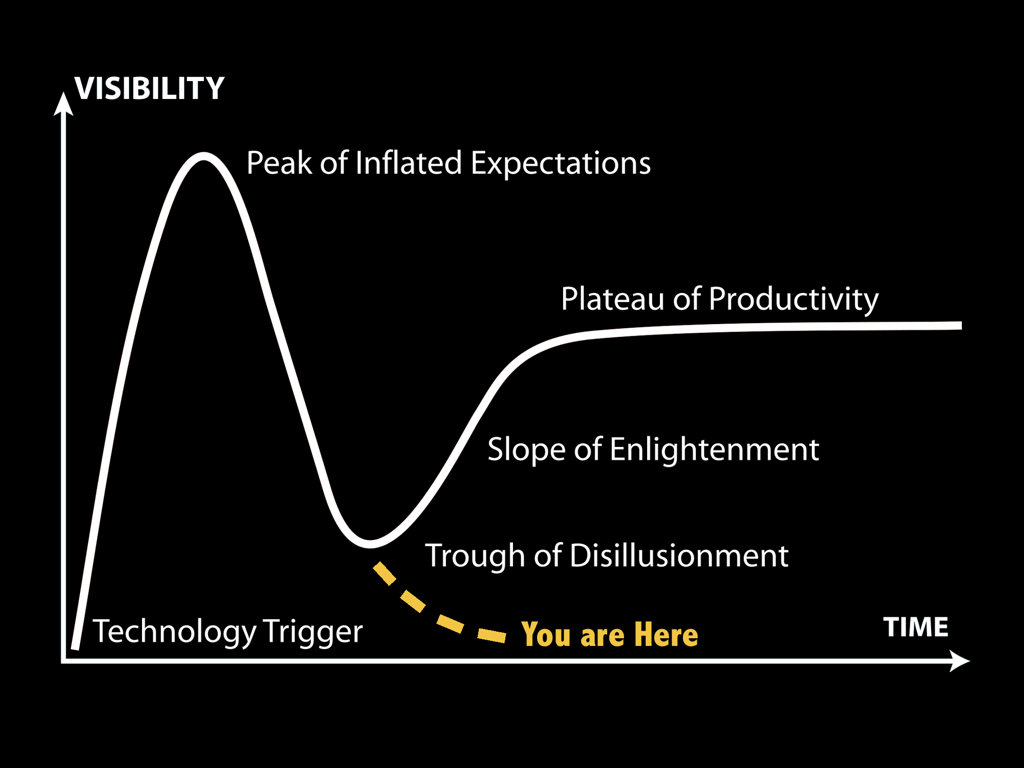
I want to end on a even more positive note: VR as a mass consumer gadget is not happening. The hype is fading and the numbers are in.
Sony seems to be Big in Japan, but Vive sold only about 400 thousands units, and Oculus 200 thousand Rifts.
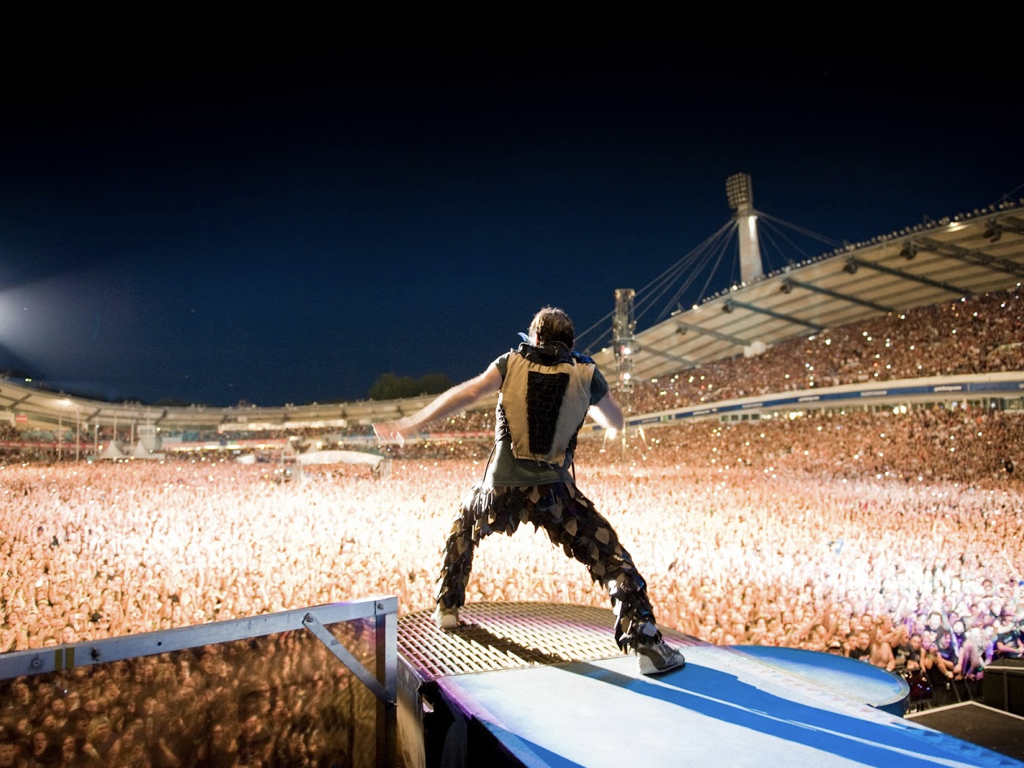
Just to give you an idea, that is the size of an Iron Maiden show in Brasil.
That’s the kind of cultural relevance VR has right now: something comparable to the Brazilian Iron Maiden fanbase.
Consumer VR is kind of dead, and that’s great news.
Because this time the hardware works pretty well.
It's as though an alien spaceship fell on earth and all the aliens died (the aliens are Silicon Valley motherfuckers who want you to go shopping in VR shopping malls and so on)…
And now we have to figure out how to use this strange technology for our very human desires.
Created with Keynote Extractor.